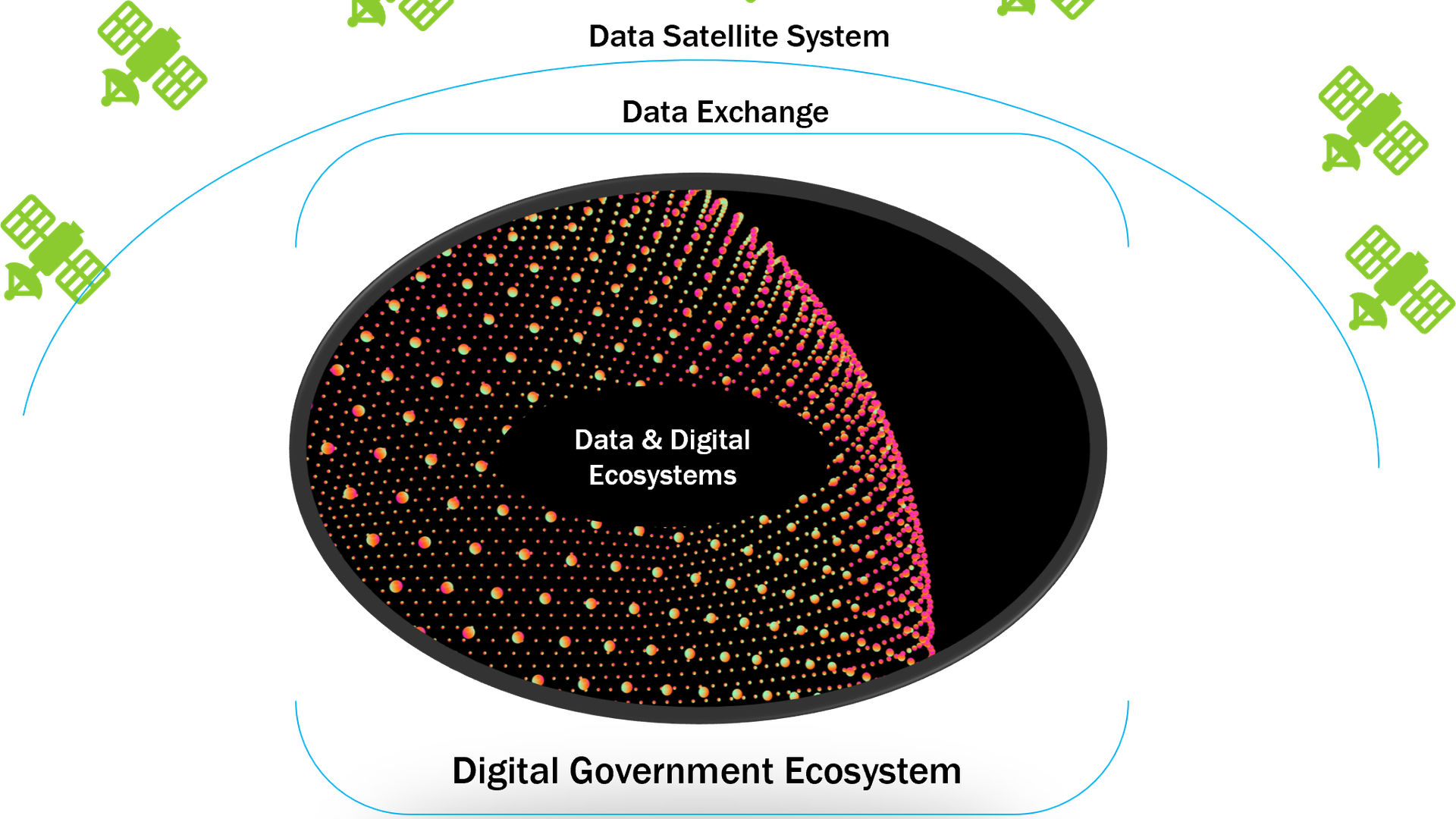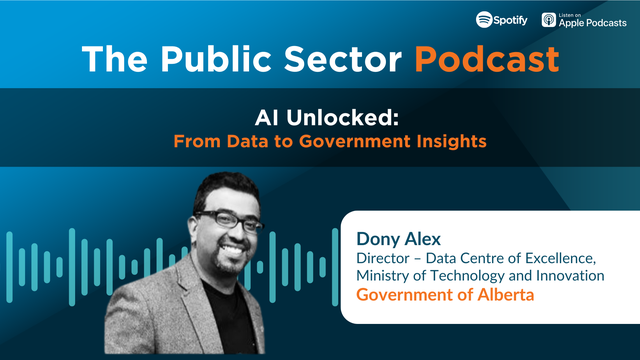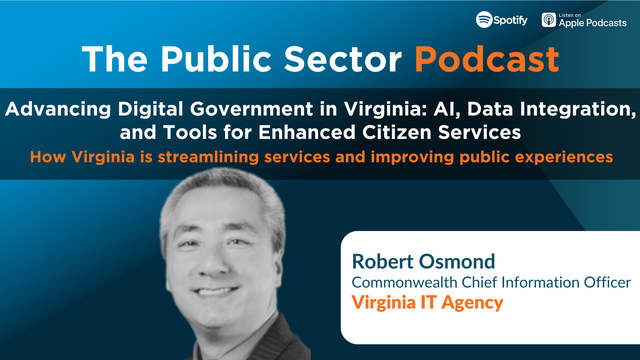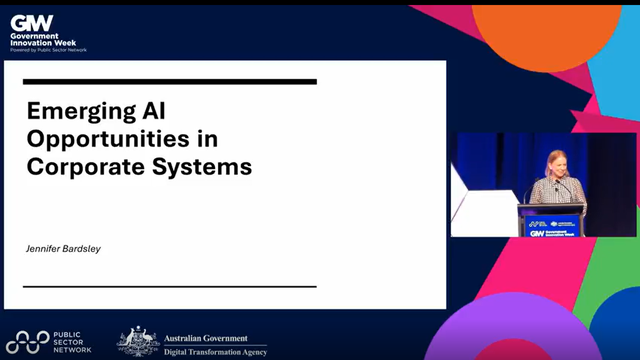

Digital Government is a super digital government ecosystem, which is a federated network of a several connected ecosystems. Broadly, considering a typical ecosystem-oriented (EO) whole-of-a government architecture and their sectors, this can include, and is not limited to:
- Agriculture ecosystem,
- Aged care ecosystem,
- Broadcast ecosystem,
- Communication ecosystem,
- Defence ecosystem,
- Education ecosystem,
- Electoral ecosystem,
- Emergency ecosystem,
- Employment ecosystem,
- Energy ecosystem,
- Environment ecosystem,
- Finance ecosystem,
- Foreign affairs ecosystem,
- Fishery ecosystem,
- Forestry ecosystem,
- Food ecosystem,
- Health ecosystem,
- Home affairs ecosystem,
- Infrastructure ecosystem,
- Justice ecosystem,
- Land ecosystem,
- Public service ecosystem,
- Sea ecosystem,
- Social ecosystem,
- Space ecosystem,
- Sprots ecosystem,
- Trade ecosystem,
- Transport ecosystem,
- Water ecosystem, and
- etc.
Data in Digital Government Ecosystems
Digital government ecosystem operates in the information (data) sphere (infosphere). Data is akin to energy for the healthy digital government ecosystem’s operations as well as evidence-based policy and decision making for prosper data driven digital economy and society. Digital data ecosystem handles the “data” within the digital ecosystem. The digital data ecosystem can include several technologies such as digital experience platform, digital connectivity, digital infrastructure, application data store, content and document management system, data exchange, data fabric, data factory, data warehouse, data hub, data lake, data marketplace, data lakehouse, data mart, data intelligence, semantic knowledge graph etc. While these technologies enable the local data management, digital experience, and boundary less data flows across the digital government ecosystems, however, there are also some pressing data challenges for complex and federated digital government ecosystems (Figure 1).
- Difficulties with right data acquisition (real-time, non-real time), believability, consistency, and quality.
- Difficulty with data governance, observability, and provenance.
- Toxic data, which is not useable or dark data, which has not been used.
- Siloed and duplicate data
These challenges could be addressed through the establishment of a new class of a data system, which is called here “data satellite” system.
Data Satellite System
Data satellite system is required to monitor, maintain, and observe the critical data assets, their health, freshness, security, movement, distribution, linking and sharing across different digital government ecosystems (also globally across borders) and related structures (e.g. departments, agencies). These data satellite systems can be established at different levels depending on their scope and coverage such as the government sector specific data satellite system for health data satellite, finance data satellite or cross sector local, state, national and global data satellites. These data satellites can be owned by the leading government agency in a specific government sector or across sectors by the leading local, state, federal and global agency (e.g. local government area data satellite, state data satellite, national data satellite, UN's global data satellites). Data satellite system can monitor, maintain, and observe the critical data assets, whereas the actual linking and sharing of data across the digital government ecosystem can be enabled by the data exchange. Like data satellite systems, data exchange systems can be established for a specific government sector (e.g. health data exchange) or across sectors (e.g. local area data exchange, state data exchange, national data exchange, global data exchange). A hybrid approach, while combining the sector specific and across sectors, can also be considered as per the specific data and digital government strategy and needs.
 Fig. 1. Data Satellite System
Fig. 1. Data Satellite System
Conclusion and next steps
Data is core to digital government ecosystem. However, not all data and related activities important are relevant. To begin with, consider 3 initial steps. As a first step, it is extremely important to establish key stakeholders and their concerns/ priorities (e.g. based on outcomes for the citizens, government, and industry) for effectively handling the data across the government ecosystems. Second, identify the critical government interactions and data assets (e.g. critical interaction service Catalog, critical data asset Catalog) aligning to stakeholders and their priorities, which are subject to monitoring, maintenance, and observance. Based on the first and second steps, identify specific requirements for the data satellite systems including their ownership, numbers, scope, cost, and coverage. This will provide quick and important insights for the next steps of planning, architecting and implementing the data satellites across the digital government ecosystem.
Key References & Resources:
- Adaptive Data Architecture For Responsible & Safe AI Adoption in Government: Reflections & Learnings from 2023.
https://publicsectornetwork.com/insight/adaptive-data-architecture-for-responsible-safe-ai-adoption-in-government-reflections-learnings-from-2023 - The Data and Digital Government Strategy.
https://www.dataanddigital.gov.au/strategy - A Theory of Information Trilogy: Digital Ecosystem Information Exchange Architecture.
https://www.mdpi.com/2078-2489/12/7/283 - Data-driven communities: fostering a local data ecosystem for sustainability. https://digital-strategy.ec.europa.eu/en/library/data-driven-communities-fostering-local-data-ecosystem-sustainability


































